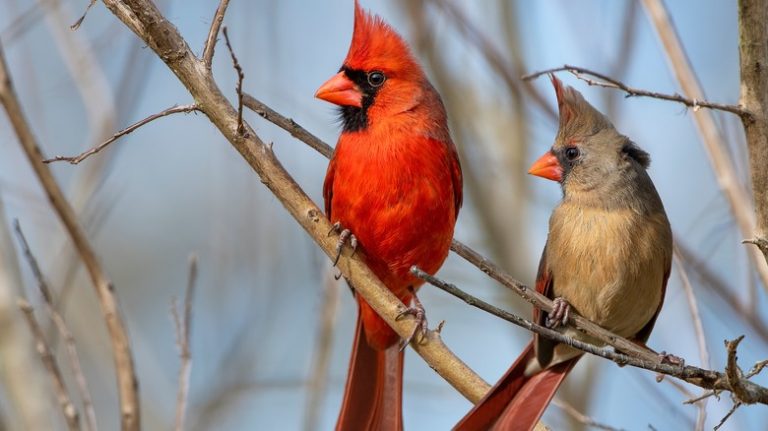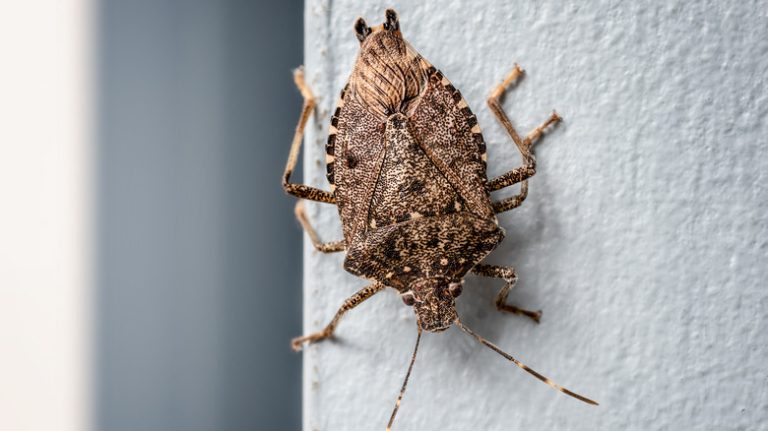Choosing the right companion plants for your tulips can still bring some color to your garden even after the tulips themselves have stopped blooming. Tulips are known for their vibrant and colorful flowers, making them a popular choice for front yard gardens. But to create an eye-catching view that lasts long enough, you’re going to need some helpful plant pairings. Here are a few suggestions to help you decide what to plant with tulips.
Native plants like bleeding hearts and daylilies can be great companions for tulips. While tulips are showy and tend to grow as spring-bloomers, the delicate pink or white flowers of bleeding hearts and the vibrant yellow, orange, or red blooms of daylilies can add a splash of color to your garden long after the tulips have faded away.
Hellebores are another great plant to pair with tulips. They thrive in partial shade and can live for many years. Their bell-shaped flowers come in a variety of colors, such as white, pink, and purple, providing a beautiful contrast to the tulips. Hellebores also have evergreen leaves that stay attractive throughout the year, even in colder temperatures.
Iris can also complement tulips nicely. These tall and showy flowers grow well in sunny locations and make a stunning combination with tulips. Their blooming season overlaps with that of tulips, creating a wonderful display of color and texture.
Another factor to consider when choosing companion plants is their ability to deter rodents. Tulip bulbs are often a tasty treat for rodents, so planting bulbs of other spring-blooming plants like daffodils or hyacinths around the tulips can help deter rodents from digging them up.
In conclusion, there are plenty of options for companion plants that work well with tulips. Whether you love colorful flowers, long-lasting blooms, or plants that complement each other in height and shape, there is something for everyone. By choosing the right plant pairings, you can create a garden that bursts with beauty and foliage almost every day of the year.
How to Grow Tulips
Growing tulips is a popular choice for many gardeners due to their beautiful blooming flowers. Tulips can be grown in pairs or in large groups to create a stunning display in your garden. Here are some tips on how to grow tulips successfully:
Planting: Tulips should be planted in the fall, around September or October, before the first frost. Choose a sunny spot in your garden with well-drained soil. Tulip bulbs should be planted about 6-8 inches deep and 4-6 inches apart. Make sure to place the pointed end of the bulb facing upwards.
Watering: After planting, water the tulip bulbs thoroughly. During the winter months, tulips require very little water. However, as the weather starts to warm up in spring, make sure to water them regularly to keep the soil moist.
Temperature: Tulips thrive in cooler climates and prefer temperatures between 45 and 55 degrees Fahrenheit. If you live in a warmer climate, you can refrigerate the bulbs for 6-8 weeks before planting them to simulate the cold winter temperatures they need.
Care: Tulips are relatively low-maintenance plants. Keep the area around the tulips free from weeds and remove any dead leaves or stems. Once the tulips have finished blooming, you can cut off the stem, but leave the foliage intact. This will help the bulb store energy for future growth and blooming.
Pairing: Tulips can be paired with other spring-blooming perennials to create a beautiful and colorful garden. Some great options for pairing with tulips include daffodils, crocuses, grape hyacinths, phlox, and daylilies. These plants have different bloom times and colors, which will provide a stunning show throughout the spring season.
Mask the Fading Foliage: After tulips finish blooming, their foliage can look untidy as it starts to die back. To mask this, you can plant low-growing annuals or perennials around the tulips. Pansies, columbine, sedum, and muhly grass are all great options to plant alongside tulips.
Growing tulips is relatively simple, but there are a few key points to keep in mind to ensure success. By planting them in the right location, providing adequate water and care, and pairing them with other plants that bloom at different times, you can enjoy a nice blend of colors and blooms in your garden. Remember to consult gardening guides, catalogs, or even your local nursery for helpful tips and advice specific to your area.
Join Us
If you’re looking to add some variety and color to your garden, planting tulips with other plants can create a beautiful and diverse display. Pairing tulips with other plants not only adds visual interest, but can also deter rodents and pests that may be attracted to the tulip bulbs.
When selecting plants to pair with tulips, consider the growing conditions and bloom times of each. Choose plants that have similar light and soil requirements to ensure they thrive together. Plants with contrasting colors and shapes can create an eye-catching display, while those with similar foliage can provide a cohesive look. Some plants that work well with tulips include:
- Daylily: These hardy plants have a wide range of colorful blooms and are perfect for pairing with tulips. They have long stems and will continue to bloom long after the tulips have finished.
- Columbine: With their unique and intricate flowers, columbines make for a perfect companion to tulips. They prefer partial shade and can add a pop of color to the surrounding area.
- Sedum: These low-growing plants have succulent foliage and are a great choice for planting alongside tulips. They are drought-tolerant and come in a variety of colors, adding interest and texture to the garden.
- Pansies: Pansies are known for their vibrant blooms, and they make an excellent pairing with tulips. They can be planted directly on top of the tulip bulbs and will continue to spread and bloom as the tulips go dormant.
- Bleeding Heart: These unique plants have heart-shaped flowers and are a striking addition to any garden. They prefer drier conditions and can be planted alongside tulips for a beautiful display.
- Creeping Thyme: For a groundcover option, consider planting creeping thyme. This low-growing herb has aromatic foliage and can spread to fill in gaps between tulips.
- Hellebores: Hellebores, also known as “Lenten Roses,” are early blooming plants that pair well with tulips. Their blooms vary greatly in color and shape, adding interest to the garden.
Please note that some plants may have different bloom times and may need to be divided or moved as they spread. Be sure to consider the mature size of each plant and allow enough space for them to grow. By carefully selecting and pairing plants with your tulips, you can create a garden that is not only visually pleasing, but also encourages plant health and diversity.
What To Plant With Tulips
When it comes to tulip companions, there are plenty of options that will join nicely with the blooms of these popular spring flowers. Whether you want to complement the shape and color of the tulip or hide dying foliage, it’s important to choose plants that will grow well together.
One great companion for tulips is the taller hellebore. This perennial has stunning foliage that will nicely complement the tulip blooms. It’s also a low-maintenance plant, so you won’t have to worry too much about disease or division.
Crocuses, another member of the iris family, make a great pairing with tulips. They grow well together and have similar care needs. Thyme is another great option to plant with tulips. It has a low spreading habit and can add a nice touch of foliage to the garden while the tulips are blooming.
If you’re looking for something simple and easy, sedum is a good choice. This plant requires minimal watering and thrives in well-drained soil. Lenten rose (Helleborus orientalis) is also a nice companion for tulips. It has beautiful winter blooms that tend to spread out nicely around the tulips.
Liriope can be a helpful companion for tulips as well. It has grass-like foliage that will nicely hide the dying tulip stems. Phlox is another great option, with its early to mid-summer blooms that pair well with tulips.
Overall, when choosing companions for your tulips, it’s important to consider plants that have similar care needs and will complement the tulip blooms. With a little bit of planning and research, you can create a gorgeous garden with beautiful tulip companion plants.
For more information on tulip companions and other gardening tips, sign up for our newsletter. Our readers love tulips and are always asking us questions about how to pair them with other plants. We’re here to help!
Pairing With Tulips
Tulips are a beautiful addition to any garden. They come in a wide variety of colors and bloom in the early spring, adding a splash of color to the landscape. To enhance the beauty of your tulips, consider pairing them with other plants that complement their colors, shapes, and bloom times.
Muhly Grass
Muhly grass is a native grass that works well when planted around tulips. It has delicate, airy foliage that contrasts nicely with the bold blooms of the tulips. The soft, feathery texture of the grass provides a beautiful backdrop for the tulips.
Hellebore
Hellebore, also known as Lenten rose, is another great companion plant for tulips. It has evergreen foliage and blooms in late winter to early spring, just like tulips. The flowers come in a variety of colors, including shades of purple, pink, and white, and they add interest to the garden when the tulips are still emerging.
When choosing companion plants for your tulip garden, it’s important to consider the habit and foliage of the plants. Some plants, like daylilies, have a spreading habit and can overwhelm the tulips. Others, like columbine, have delicate foliage that can get lost among the tulip leaves.
It’s helpful to choose plants that have a similar or complementary color palette to the tulips. For example, pairing red tulips with coral bells, which have red or burgundy leaves, creates a harmonious color combination. Similarly, pairing yellow tulips with daffodils, which have yellow blooms, creates a unified look.
When planting tulips and their companions, make sure to plant the tulips above the other plants. Tulips need full sun to thrive, so they should be located in a spot where they will receive at least six hours of direct sunlight per day. The other plants can tolerate partial shade or dappled sunlight.
Crocuses also make excellent companions for tulips. They bloom at the same time and come in a variety of colors. Planting them together creates a stunning combination of colors and textures. Crocuses tend to be smaller than tulips, so they work well planted in front of or in between the tulips.
Whether you choose to pair your tulips with grasses, hellebores, or other perennials, the key is to create an appealing combination of colors, shapes, and textures. By choosing compatible plants and carefully planning their placement, you can create a beautiful garden that will bring joy throughout the spring.
| Tulip Varieties | Companion Plants |
|---|---|
| Red tulips | Coral bells |
| Yellow tulips | Daffodils |
| Pink tulips | Hellebores |
| White tulips | Muhly grass |
| Purple tulips | Crocuses |
Please note that these pairings are just suggestions. Feel free to experiment and find the combinations that work best for your garden and personal preferences. Happy gardening!



